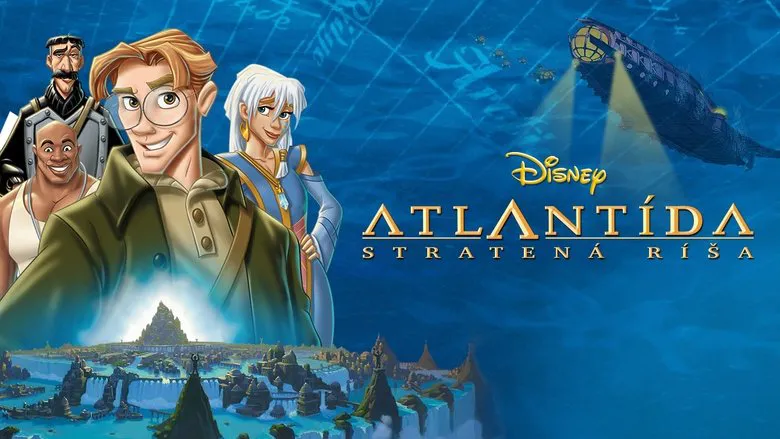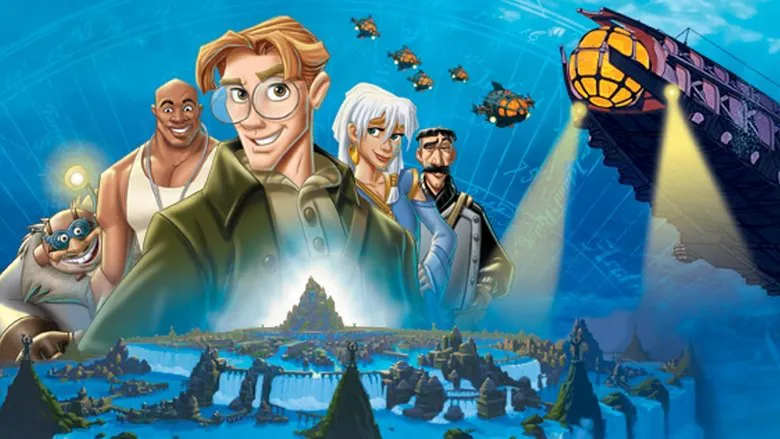Atlantis: A Retro-Futuristic Animated Adventure
“Atlantis: The Lost Empire” emerges as a worthy tribute to Disney’s centennial, a $90 million endeavor crafted in the studio’s time-honored tradition. This classic, hand-drawn animated feature, subtly enhanced with computer graphics, boasts meticulously detailed settings, parodic characters, and a pioneering spirit of adventure. The legend of Atlantis is reimagined here in a retro-Jules Verne style, evoking a sense of nostalgia and wonder.

The film’s retro-futuristic aesthetic is deliberate, drawing inspiration from the adventure serials starring Pearl White or Douglas Fairbanks that Walt Disney himself might have enjoyed in his youth. This style also serves as a subtle parody of contemporary blockbuster trends. Much like “The Mummy” playfully references its 1930s origins, “Atlantis” acknowledges the enduring cinematic fascination with the legendary lost city. One might recall G.W. Pabst’s serious 1930s film, “L’Atlantide,” where the secret of the sunken island was hidden in the Sahara Desert.

This time around, young audiences will be captivated by a fantastical submarine straight out of 1914 – sans Captain Nemo, but with its own version of Lord Glenarvan and a quirky scholar akin to Paganel. This “Paganel,” named Milo Thatch, possesses an ancient manuscript detailing the path to Atlantis and its ultimate treasure: an unparalleled energy source that once fueled a civilization far surpassing our own. And so, a team of adventurers embarks on a perilous journey, venturing directly into the jaws of a monstrous Leviathan guarding the entrance to this enchanted realm. Children will also delight in the film’s numerous wonders, including extraordinary flying machines, a protective dome that safeguards the island from destruction, and the revelation that Princess Kidagakash Nedakh has lived for 8,000 years. Humorous moments abound, such as when a helmet proves too large for a character, constantly slipping over their nose, or when the yoga-practicing “Glenarvan” scratches behind his ear with his big toe.

A Treat for Adults Too
Adults accompanying their children will find the hour and a half surprisingly enjoyable. The film features a meticulous stylistic homage to “films of 1914,” complete with frock coats, riding breeches, and a nod to the sinking of the Titanic. There’s also a memorable elderly switchboard operator who, even amidst a bombing, remains steadfastly engaged in a phone conversation with a friend: “He left? And took his things? No, he’s definitely not coming back.” The mystery of Atlantis’s energy source is also intriguing. It remains unexplained, as the Atlanteans derived both electricity and heating from the accumulated power of their own spirits, visible in their eyes. “The secret of the source is hidden in the eyes of the king” – a concept that only the brightest children will grasp initially, prompting them to explain it to others, thus fostering intellectual development.

The End of an Era?
Everything is visually appealing and amusing. However, in the wake of computer-animated films like “Shrek,” hand-drawn animation inevitably feels like a dying art form. With “Atlantis,” Disney made a deliberate choice to champion traditional animation, only incorporating three-dimensional imagery sparingly in the film’s finale. While the studio’s principles are admirable, this approach may now represent a rearguard action.
Disney has always been synonymous with entertainment, but computer animation offers a broader range of possibilities.